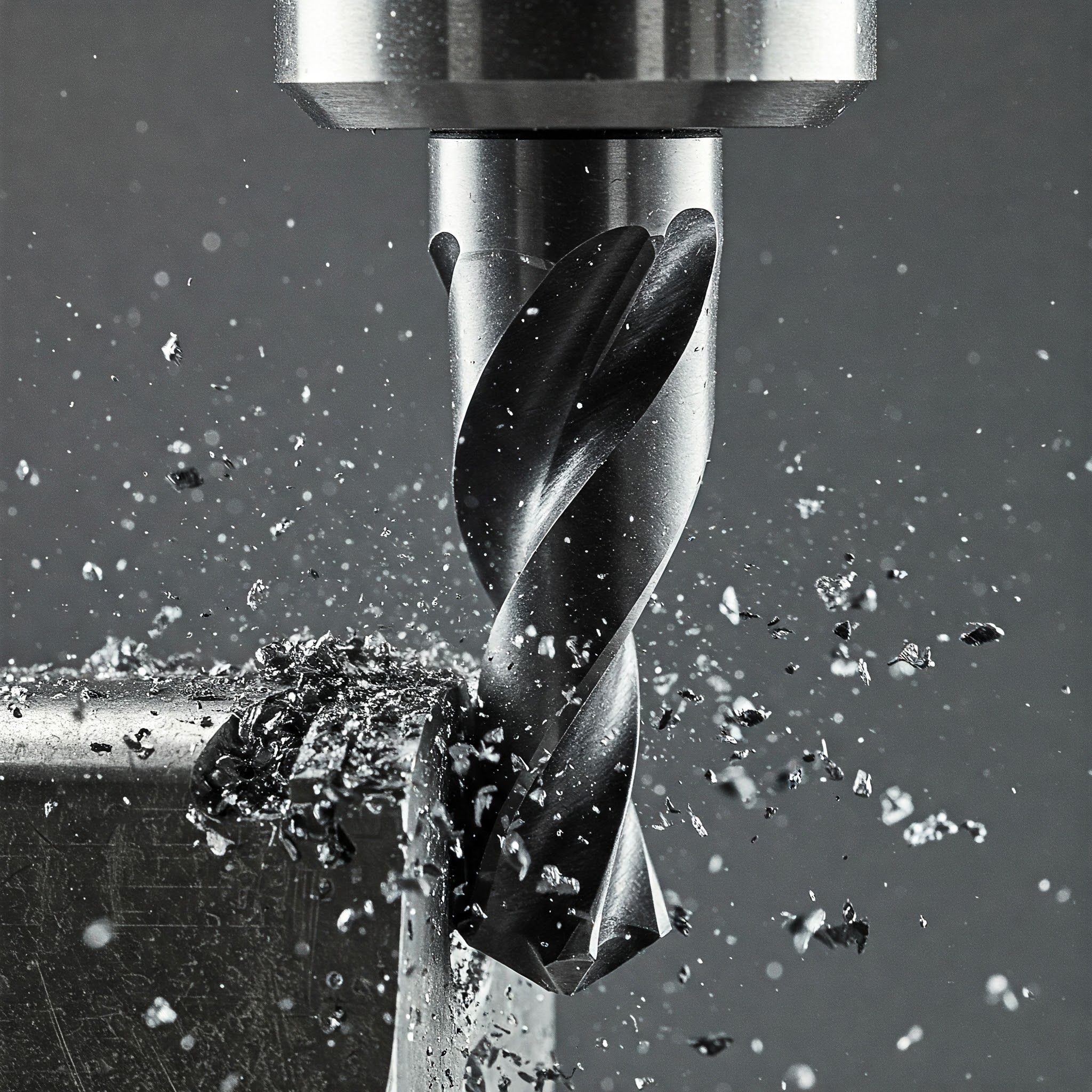Metal Removal Rate
Metal Removal Rate Formula |
||
|
\( MRR \;=\; ADOC \cdot RDOC \cdot TF \) (Metal Removal Rate) \( ADOC \;=\; \dfrac{ MRR }{ RDOC \cdot TF }\) \( RDOC \;=\; \dfrac{ MRR }{ ADOC \cdot TF }\) \( TF \;=\; \dfrac{ MRR }{ ADOC \cdot RDOC }\) |
||
| Symbol | English | Metric |
| \( MRR \) = Metal Removal Rate | \(in^3\;/\;min\) | - |
| \( ADOC \) = Axial Depth of Cut | \(in\) | - |
| \( RDOC \) = Radial Depth of Cut | \(in\) | - |
| \( TF \) = Table Feed | \(in\;/\;min\) | - |
 Metal removal rate, abbreviated as MRR, is a machining parameter that quantifies the volume of material removed from a workpiece by a machining process over a specified period of time. It is a critical factor in determining the efficiency and productivity of machining operations, such as milling, turning, drilling, and grinding. It provides valuable information about how quickly material is being cut away from the workpiece and is influenced by various factors, including cutting speed, feed rate, and depth of cut. Higher MRRs generally indicate faster material removal, which can lead to increased productivity. However, higher MRRs can also lead to increased cutting forces, heat generation, and tool wear, which need to be carefully managed to maintain machining quality and tool life.
Metal removal rate, abbreviated as MRR, is a machining parameter that quantifies the volume of material removed from a workpiece by a machining process over a specified period of time. It is a critical factor in determining the efficiency and productivity of machining operations, such as milling, turning, drilling, and grinding. It provides valuable information about how quickly material is being cut away from the workpiece and is influenced by various factors, including cutting speed, feed rate, and depth of cut. Higher MRRs generally indicate faster material removal, which can lead to increased productivity. However, higher MRRs can also lead to increased cutting forces, heat generation, and tool wear, which need to be carefully managed to maintain machining quality and tool life.
Balancing the MRR with considerations for tool life, surface finish requirements, and machine capabilities is essential for optimizing machining processes. Machinists and engineers adjust cutting parameters to achieve the desired balance between productivity and quality based on the specific material being machined, the type of cutting tool used, and the machining equipment's capabilities.
Metal Removal Rate Formula |
||
|
\( MRR \;=\; \dfrac{ ADOC \cdot RDOC \cdot TF }{ 1000 }\) (Metal Removal Rate) \( ADOC \;=\; \dfrac{ 1000 \cdot MRR }{ RDOC \cdot TF }\) \( RDOC \;=\; \dfrac{ 1000 \cdot MRR }{ ADOC \cdot TF }\) \( TF \;=\; \dfrac{ 1000 \cdot MRR }{ ADOC \cdot RDOC }\) |
||
| Symbol | English | Metric |
| \( MRR \) = Metal Removal Rate | - | \(mm^3\;/\;min\) |
| \( ADOC \) = Axial Depth of Cut | - | \(mm\) |
| \( RDOC \) = Radial Depth of Cut | - | \(mm\) |
| \( TF \) = Table Feed | - | \(mm\;/\;min\) |

